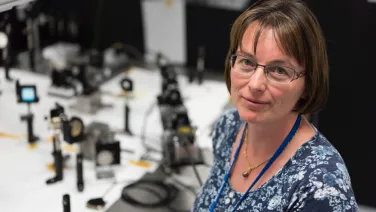Why diversity, equity, and inclusion matter in science

Dr John Noel Viaña has a background in molecular biology and neuroscience, but if you find him sitting in a laboratory, it’s not with a pipette or scalpel in hand. He’s there with a notepad and audio recorder, observing how science is being done.
Dr Viaña is a bioethicist at the Australian National Centre for the Public Awareness of Science at ANU researching how to promote greater diversity, inclusivity, and equity in biomedical and health research.
He has worked as an ‘embedded’ bioethicist and social scientist in a range of research projects, examining ethical and equity issues from the perspective of researchers. His goal, he says, is to “facilitate discussions among scientists on how to make their current and future projects more inclusive and culturally sensitive.”
“I am looking at the opportunities and challenges for including people from minority backgrounds in research – and that includes racial, ethnic, and linguistic minorities; people experiencing socio-economic disadvantage; people who might be younger or older; and also people who identify as LGBTQIA+,” Dr Viaña explains.
“I’m also exploring how the ways we communicate research findings can impact people from minority backgrounds, even potentially marginalising them further.”
His research looks beyond the much-needed calls to diversify science by highlighting the structural barriers that limit the extent to which we can have diverse participants and researchers.
“For example, to what extent are researchers from a racial minority background actually able to impact the demographics of their study’s participants?” he explains. “You could have a lot of minority researchers, but then, if they don't have any influence on recruitment, then that does not necessarily translate to greater diversity in the research participants. We need to understand these factors.”
As someone with a scientific background, and with experience of being embedded in labs, Dr Viaña says he’s keenly aware of the number of assumptions at work in any scientific process and product.
“We always see science as the ultimate objective ‘truth’, something that's unbiased and value-free. But when we read a scientific paper, we need to ask: how do social conditions and contexts influence the kind of science produced? What types of bodies is the evidence based on? And to what extent are the findings relevant to our ever-changing society?”
These questions demonstrate the value of integrating principles of equity, inclusion, diversity, and justice across the biomedical and health sciences, Dr Viaña says.
“We can’t leave any particular community behind,” he explains. “The objective truth cannot just be founded on white, male, socio-economically privileged, 40-year-old bodies. And we need to interrogate this fact – because while sometimes interventions based on this sample might work for everyone, there are instances wherein some interventions could actually be harmful for particular populations.”
“If we want people to trust in science,” he says, “then the conduct of science needs to be inclusive.”



